
2023 Update:
Here is the first of a never-completed nine part series of musings on Valentin Tomberg, Catholicism, Rudolf Steiner and the world tragedy, written many years ago in 2011. In recently re-visiting it, for the first time in years, I have seen fit to rewrite it a little. But for the most part it remains as it was, even if today it seems to me very slightly crude and immature in places.
My more mature thinking on Tomberg is found in my books, key articles like this one and the YouTube videos you will see peppered through the series. Still I think there may be valuable material in this series not found elsewhere and For navigation purposes, we list and link the nine parts here:
- Valentin Tomberg, Catholicism and the Counter-Revolution—Pt. 1
- Valentin Tomberg, Catholicism and the Counter-Revolution—Pt. 2
- Valentin Tomberg, Catholicism and the Counter-Revolution—Pt. 3
- Valentin Tomberg, Catholicism and the Counter-Revolution—Pt. 4
- Valentin Tomberg, Catholicism and the Counter-Revolution—Pt. 5
- Valentin Tomberg, Catholicism and the Counter-Revolution—Pt. 6
- Valentin Tomberg, Catholicism and the Counter-Revolution—Pt. 7
- Valentin Tomberg, Catholicism and the Counter-Revolution—Pt. 8
- Valentin Tomberg, Catholicism and the Counter-Revolution—Pt. 9
And now back to 2011 — Roger Buck

As this series unfolds, we mean to turn in ever greater depth towards both the Christian Hermeticism and the Catholic legal-political vision of Valentin Tomberg. But something is necessary first.
For as we indicated in the last entry, both of the above—Tomberg’s Catholic politics and his Catholic Hermeticism—were given as responses to the tragedy of world degeneration.
And before we turn to that which Valentin Tomberg offered—with all his life’s blood—as healing remedy to this crippling degeneration, it seems necessary to reflect more on the disease itself.
Thus in the next entries, I focus first on Tomberg’s thinking on degeneration.
Now, I remarked last time to the effect that the theme of degeneration was more prominent in the legal-political writings, where one finds it addressed with a burning urgency. To these, we will soon turn.
However, we indicated that the same ideas occur repeatedly in the hermetic works.
Let us illustrate by considering a passage from Valentin Tomberg’s meditation on the Virgin and virginity in the Eleventh of the Meditations on the Tarot:
The sickness of the West today is that it is more and more lacking creative élan.
The Reformation, rationalism, the French revolution, materialistic faith of the nineteenth century, and the Bolshevik revolution, show that everywhere mankind is turning away from the Virgin.
The consequence of this is that the sources of creative spiritual elan are drying up, one after the other, and that an increasing aridity is showing up in all domains of the spiritual life of the West.
It is said that the West is growing old.
But why? Because it lacks creative elan, because it has turned away from the source of creative élan, because it has turned away from the Virgin.
Without virginity there is no springtime; there is neither freshness nor youth …
Anonymous (Valentin Tomberg) Meditations on the Tarot, p. 291.
Now the passage we have just quoted invokes what may call a quaternity.
In chronological order, this quaternity might be listed thus:
- Reformation (Sixteenth Century).
- Rationalism (Emerging with Eighteenth Century Enlightenment).
- Revolution (1789 French and later Russian are cited here).
- Materialism (scientific, philosophical, commercial – erupting in the Nineteenth Century).
The careful reader of the Meditations will see how Tomberg repeatedly invokes this quaternity in slightly different ways throughout the course of four pages.
To give another example, he writes on the following page:
The Hermeticist is … an iconophile and traditionalist. This means to say that he does not side with the successive waves of iconoclasm — the waves named “reformation”, “enlightenment”, “scientific faith”— which set fire to forests of symbols protecting [my emphasis] the intellectual sun of humanity against barrenness and erosion.
Anonymous (Valentin Tomberg) Meditations on the Tarot, p. 292.
And after expanding still further, we have once again two pages later:
The Virgin is not only the source of creative élan, but also of spiritual longevity.
This is why the West, in turning away more and more from the Virgin, is growing old, i.e. it is distancing itself from the rejuvenating source of longevity.
Each revolution which has taken place in the West —that of the Reformation, the French revolution, the scientific revolution, the delirium of nationalism, the communist revolution — has advanced the process of aging in the West, because each has signified a further distancing from the principle of the Virgin.
In other words. Our Lady is Our Lady, and is not to be replaced with impunity either by the ‘goddess reason”, or by the ‘goddess biological evolution”, or by the ‘goddess economy”.
Anonymous (Valentin Tomberg) Meditations on the Tarot, p. 291.
Writing in the 1960’s, Valentin Tomberg was gravely concerned with Communism. Today, dear Lector, may I offer you my opinion that Valentin Tomberg is also gravely concerned with adulation of the “goddess economy” that we are presently so fixated on, following the “Reagan Revolution” . . . ?
Be that as it may, the point to the above is that Tomberg clearly gathered a number of different phenomena – rationalism, Reformation and more – under the one collective heading: Revolution.
Revolution, he would say, constitutes a self-mutilation: a surgical amputation from the living flow of tradition …
Reading the legal-political works, it becomes clearer how Tomberg related all of these to the radical revolution, which was the Protestant Reformation and which destroyed so much that he saw as – once more – protecting humanity, so much that offered entry-routes to the Virgin (e.g. Ave Maria, gratia plena , Hail Mary, full of grace. . .)
The decay into materialism thereby follows. And arguably, it happens in the Protestant Anglo-American world first and foremost and more slowly elsewhere.
(At least, dear Reader, I have lived in both Catholic Spain and Catholic Ireland and the experience of living there was sufficient to show me that those societies had decayed into materialism far, far more slowly than either Britain and America—to which I both belong by blood and birth).
In Degeneration and Regeneration of Jurisprudence—now published under the title of The Art of the Good—the former Anthroposophist and now Catholic Tomberg will write:
All revolutionary movements of the Nineteenth Century are rooted in the concept of the primacy of the material.
Valentin Tomberg The Art of the Good
Now, the Nineteenth Century revolutions include for instance, that of deposing arguably the last true king of France, Charles X (in 1830) as well as numerous Latin American revolutions against the mother country.
And taken as a whole, the legal-political writings relate these revolutions all to the Reformation in the Sixteenth Century.
As Valentin Tomberg writes in Foundations of International Law as Humanity’s Law:
The French Revolution was but a stepping stone – a stepping stone that demonstrated with alarming clarity the great trend of revolutions which began with humanism in the Fourteenth Century, then resulted via the Reformation in the Enlightenment of the Eighteenth Century, which in turn, took “fleshly” form in the revolution of 1789.
From there it advanced via 1830 and 1848 to the international community of 1871 [when the Third French Republic arose, among other things – RB] – and to the Russian revolutions in 1905, February 1917 and October 1917.
Valentin Tomberg, Foundations of International Law (Edition from Grail Guide Publications), p. 74.
Here in these legal writings Tomberg is describing what he clearly sees as a fatal chain of degeneration.
We mean to turn to these legal writings soon. We will also parallel these with Rudolf Steiner’s thought on degeneration – and in contrast to Steiner, we will see how Tomberg considered these developments in a far more consistently dark and tragic register.
And in this, we can hopefully gain insight into why Tomberg turned from Steiner’s Anthroposophy to Rome …
But in speaking of these things, we are beginning to deal with often long-forgotten history. It is a history that in many ways our liberal and secular educators and elites would prefer that we forget.
I would just like to say that a very long piece has now appeared in the Tridentine Archive at this site.
For some it will be a highly controversial piece and, at first, I hesitated posting it. The piece does contain things I disagree with and, as I write in my foreword to it, publishing it here should not be taken as endorsement of all it says.
The article is entitled The Great Nineteenth by Gary Potter and, with my foreword, it can be found here.
And for those who are interested in the historical background here, it can help to illumine certain Nineteenth Century currents, particularly in France, which Tomberg turned to following his Anthroposophy.
And in relation to this, we shall see how in contrast to Steiner, Tomberg turned to the Catholic Counter Revolution …
To be Continued …
Foreword for Monarchy by Roger Buck
Buying Books at Amazon Through These Links Gives Us a Commission. This Supports Our Apostolate. Thank You if You Can Help Us Like This!

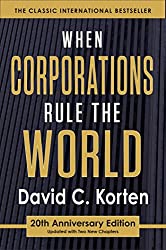

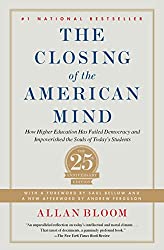
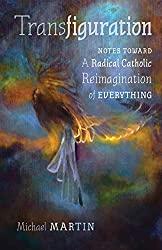
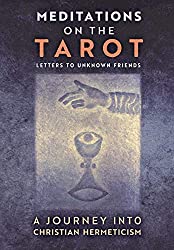
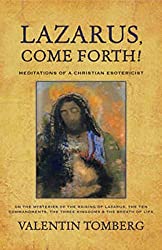

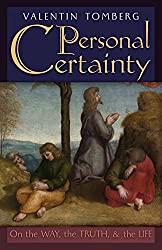




Comments
comments are currently closed
3 responses to “Valentin Tomberg, Catholicism and the Counter-Revolution—Pt. 7”
It is interesting to link the ideas of Virginity with the forest of symbols…to suggest they have protective effect on society. It made me think of the Renaissance…which attempted it seems to resurrect some of the Pagan symbolism and wed it with existing Catholic ones…Interestingly, the Tarot is often thought of as Renaissance work. The multi-layered character of the Meditations seem to lend itself to a comparison to this period. There were many dabblers in Kabbalah, Hermeticism, Alchemy who seemed to orient it to existing Christian beliefs. In my experience Catholic Traditionalists tend to veer away sharply from anything without a Catholic tag. I wonder if Tomberg would have been comfortable with a Traditionalist designation after all. Certainly, there are Traditionalist elements to his writing but I see it as too multi-layered to fit comfortably there.
To return to the subject of degeneration…my musing here has a point. One may need a larger forest of symbols to contain the kernel of the Catholic/Christian mystery. Certainly Tomberg operated with one. This may be found in the diverse religious/spiritual/esoteric systems of Man.
Edwin, thank you very much again for this.
No doubt that the forest of symbols expands over time and as I say Tomberg advocated baptising, Christianising pagan streams – not rejecting them.
However I also think there is a grave danger for many Catholics at least in turning away from their own symbols and looking elsewhere. Sometimes the temptation to look elsewhere shows that Catholics at any rate, have not really done enough to honour all the treasure which has been given them.
One goes in search elsewhere because one has not allowed oneself to be penetrated by what one has been given – in certain cases at least.
I also certainly know what you mean by “multilayered”.
There are many tensions and paradoxes here …
And you might think I am reducing Tomberg to something he is not.
In your next comment on a similar theme, you mention “discernment”.
This series represents my nearly 14 year effort to discern what Tomberg was saying.
I think you are right that Tomberg would not use this label Catholic Traditionalist with a capital T.
A careful reading of this website would also show that never once do I call myself a Catholic Traditionalist with a capital T either …
Nonetheless I do aspire – for the sake of the world, as I far as I can see – to be a VERY vigorous and active friend and support to Catholic Traditionalists – whether I am liked or not.
I will be replying to you more indepth to these same themes here at the most recent comment you have left.
Here I will just say that key to all of this is my phrase “for the sake of the world” …
Valentin Tomberg championed dogma very powerfully, defended Papal Infallibility, he gave a critique of Vatican II with nothing good to say about it, he supported Humanae Vitae when almost no-one did, etc – he threw all his weight behind Catholic Tradition in so many ways that many non-Catholics and so-called “progressive” Catholics find difficult to take on board …
Certainly I found it all very hard to take on board.
Part of my own processes of discernment was looking at the reasons in myself why I found it hard to take on board.
I want to unpack more in my next response to you and in this series as a whole.
Right now, I would just like to append something which is all to do with “the sake of the world”. Something that has appeared elsewhere at this site.
It is words from Lazarus Come Forth to which I added my own words:
“The darkening which today is described as “the present crisis of the Catholic Church” can lead to the necessity for the solitary sons of the Church to hurry to the aid of the Holy Father, the most solitary of solitaries, in order to save the Church from the abyss toward which she is moving. ..”
Finally dear Reader, I would like to say that these final words regarding “the necessity for the solitary sons of the Church to hurry to the aid of the Holy Father … in order to save the Church from the abyss” have been a major source of inspiration for this website.
This abyss is very real and each of us must do what we can.”
This is what it’s about for me, Edwin …
As usual this post is pretty interesting. The catholic tradition and the counter revolution part VII info are historical. I enjoyed the post. I’ll look forward for next part. Thanks